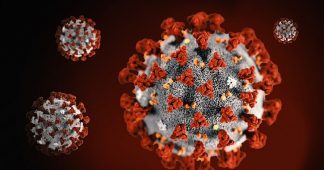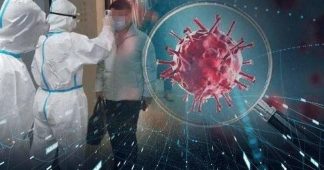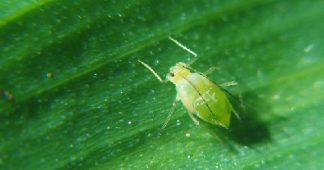Jul. 30, 2020
The warning comes amid back and forth claims by US and Chinese officials about the origins of the novel coronavirus, with some politicians and media claiming the virus was engineered and may have leaked from a lab, while others have dismissed such claims.
The risk of the leak of a modified flu virus from one of over a dozen labs across the United States, China, the Netherlands and elsewhere into the public remains unacceptably high, and it’s nearly impossible to guarantee the lack of seepage in the future, Dr. Lynn C. Klotz of the Bulletin of the Atomic Scientists warns.
In a recent article on the subject, the biotech expert calculated that each of the 14 facilities worldwide known to be carrying out research on airborne transmissible flu viruses carry a 0.246 percent risk of accidentally leaking a virus and sparking off a 1918 flu-style pandemic and killing 50-100 million people for every year that research continues.
The risk factor is based on scientists’ efforts to engineer and ‘enhance’ influenzas to make them transmissible to mammals, with such research, known as ‘gain-of-function’ studies, ostensibly aimed at beating the clock against flu viruses in nature to allow researchers to get a head start on vaccines in the event of their mutation.
There are at least three ways that leaks can take place, Klotz notes, included an undetected or unreported lab-acquired infection by a lab worker, “mischaracterization of a virus as harmless,” leading to improper storage, or even the “purposeful release into the community by a mentally unstable worker or someone with evil intent.” According to the scientist’s research, recent data from US biosafety level 3 labs shows that human error was responsible for 67-79.3 percent of potential virus exposures.
The Bulletin estimates that there are at 14 labs engaged in the study of dangerous lab-created or enhanced influenza viruses in nations including the US, China, the Netherlands, the UK, Japan, Italy, and South Korea.

Klotz warns that although some countries have sought to restrict such gain-of-function research in the past, the rules are flexible, allowing researchers to get around them. He recalled, for example that “in 2017, the US government issued new rules for how the Department of Health and Human Services decides whether or not to fund these studies, but” that “the rules only apply to research funded by the National Institutes of Health and are ambiguous enough that even risky research can still win government backing.”
Ultimately, the veteran scientist recommends that it remains uncertain just how virulent or prone to transmission to humans potential pandemic viruses may be if released. “In the best-case scenario, they would soon die out with little to no sickness and no fatalities; however just the possibility of a pandemic dictates that we must proceed with the utmost caution. Given the frequency with which incidents happen at even highly secure labs, and given the questionable value of gain-of-function research on avian influenzas, it’s worth considering whether we want to even entertain the possibility of a catastrophic pandemic,” Klotz concludes.
The Bulletin of the Atomic Scientists’ warning is not new. In the years leading up to the coronavirus pandemic, researchers warned repeatedly about the dangers of research into modified bat-derived viruses similar in structure to COVID-19. The details of the origins of the coronavirus remain hotly contested, but it is known scientists from China, the US and Australia engaged in collaborative research or provided grant funding for research for bat coronaviruses before COVID-19’s emergence.










